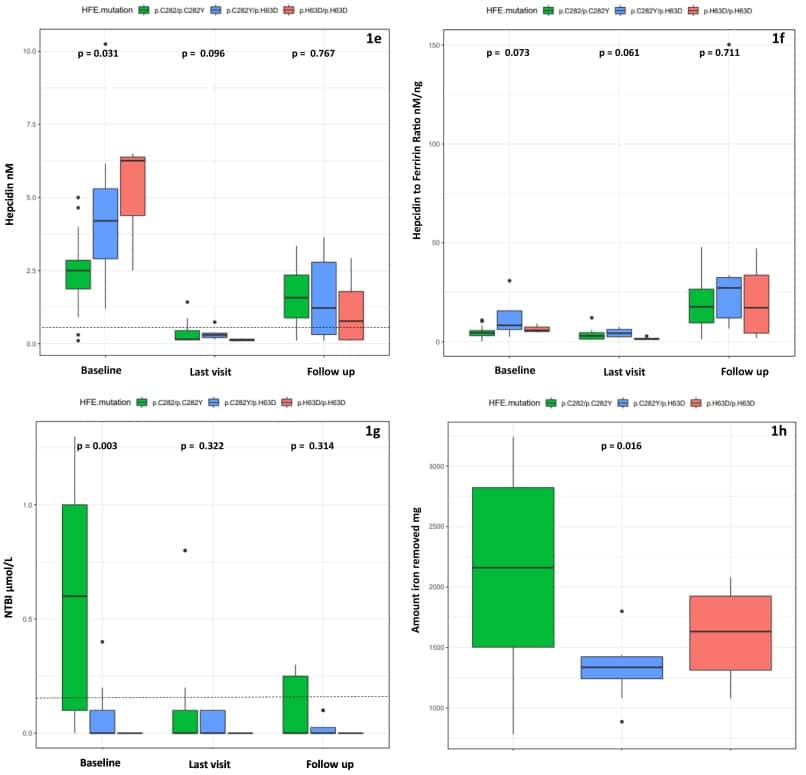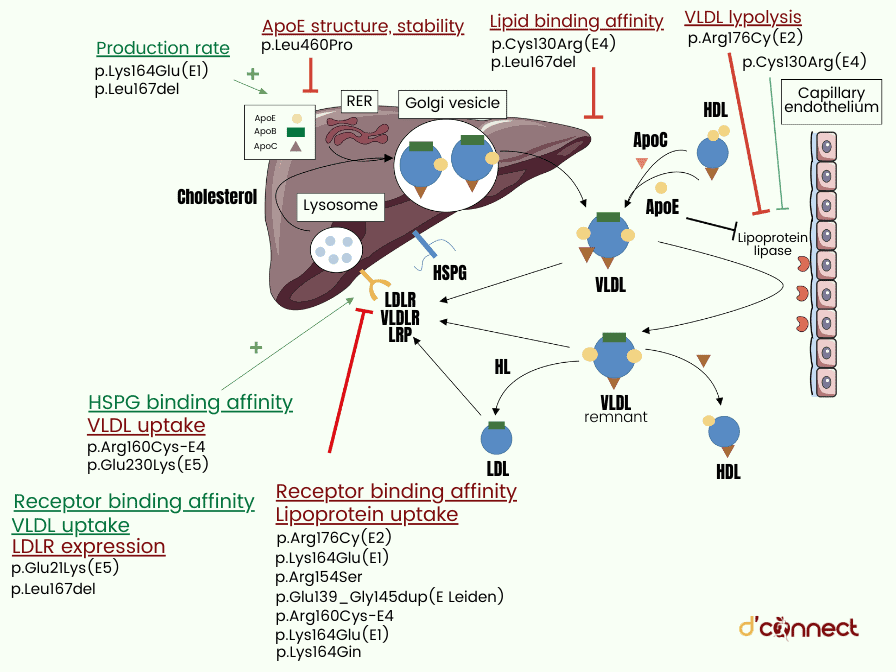
Farha Ramzan
Research Fellow
Our unique genetics can affect our health in different ways. This is also true for certain food items, that, based on our genes and genetic variations, might have a negative effect on our health, even though the food item is considered healthy.
This is best seen with:
- Iron
- Calcium
- Sodium
- Caffeine
- Catechins
- Saturated fats
If you think that you might have an issue with a certain nutrient, we suggest reading the article.
Iron
Iron has several crucial roles in the health of our body, and maintaining normal iron levels is important because the body lacks an efficient excretory mechanism for iron.
The body relies on regulating iron absorption in the intestines and is constantly recycling and reusing cellular iron.
RELATED — Iron (for immunity support and energy production)
Excessive iron absorption can have detrimental effects on the body, as it may trigger:
- oxidative stress
- promoting fibrosis
- carcinogenicity
- deactivating essential metabolic enzymes[1]

A specific genetic variation influences the iron absorption process in the HFE gene, which significantly regulates iron uptake in the intestines.[2] This genetic variation is most commonly found in the short arm of chromosome 6 (6p), where guanine (G) is replaced by adenine (A).
This specific variation, known as the C282Y polymorphism, interferes with the normal function of the HFE protein, preventing it from reaching the cell surface and disrupting its interaction with essential proteins responsible for iron absorption.
As a result, individuals with this polymorphism experience increased iron absorption and accumulation in the body, potentially leading to iron overload and related health complications.
This was observed in a study involving healthy individuals with haemochromatosis (HC), a genetic condition affecting iron deposition in the liver with clinical manifestations of iron overload in the absence of a red blood disorder.[3]
The study compared baseline patterns of iron biomarkers and their relationships before and after iron removal and their changes during treatment in individuals with common HFE mutations.

The authors demonstrated p.C282Y homozygotes with increased risk of iron dependent toxicity, while this risk appears to be much lower in individuals with the p.C282Y/p.H63D genotype.[3]
Calcium
Calcium is the most abundant mineral in the human body, contributing approximately one kilogram to the average adult’s body mass.
RELATED — Calcium (for healthy bones, teeth and heart)
While the majority, 99% of calcium, is stored in the skeleton and teeth, the remaining 1% circulates in the bloodstream, where it plays a crucial role in various biological functions.
Calcium levels in the bloodstream have been associated with:
- bone and mineral metabolism disorders
- cardiovascular disease mortality
Throughout the body, the calcium-sensing receptor (CASR) is distributed, regulating calcium levels and influencing its absorption and utilisation.[4]
However, the gene that encodes CASR can be affected by the presence of genetic polymorphisms.[5] These polymorphisms can impact calcium sensitivity and subsequently influence an individual’s risk of developing conditions related to calcium metabolism, such as osteoporosis.
One commonly found polymorphism in the CASR gene is A986S, whose incidence is reported to vary between 15% and 30%.[6] This polymorphism has been associated with alterations in serum calcium levels.
For instance, a study involving 163 healthy women revealed that heterozygous subjects with AS polymorphism (n=43) and homozygous SS subjects (n=5) exhibited higher serum calcium levels.
Sodium
Sodium is an indispensable nutrient vital for normal body function and overall health, and it is expected to have a physiologically optimal range of intake, similar to other essential electrolytes.
Dietary sodium intake within the range of 3 to 5 grams per day has been associated with the lowest cardiovascular risk, making it optimal for maintaining health. However, the risk of cardiovascular disease increases when sodium intake exceeds 5 grams per day or falls below 3 grams per day.
The epithelial sodium channel (ENaC) gene plays a significant role in fluid clearance in the body. ENaCs in human kidneys are primarily αβγ channels. Interestingly, polymorphisms in several subunits of this gene have been found to influence blood pressure regulation and hypertension.[7]
One particular subunit, Sodium Channel Epithelial 1 Alpha (SCNN1A), plays a crucial role in kidney sodium transport.
Polymorphisms in the SCNN1A gene may impact sodium reabsorption in the kidneys, potentially influencing an individual’s sodium sensitivity and ability to regulate blood pressure.
Caffeine
Coffee is primarily metabolised by the body’s cytochrome P450 1A2 (CYP1A2) enzyme. However, the metabolism of caffeine varies among individuals due to genetic differences.
A common polymorphism in the CYP1A2 gene, known as the rs762551 variant, has been found to impact caffeine metabolism.[8]
Those with the AC and CC genotypes (slow variants) are considered slow metabolisers, while individuals with the AA genotype are regarded as fast metabolisers.
For slow metabolisers, caffeine is metabolised more slowly, leading to prolonged effects and potential sensitivity to caffeine’s stimulating properties. Conversely, fast metabolisers break down caffeine quickly, resulting in fewer stimulant effects.
This genetic variation has also been associated with modifying the relationship between coffee consumption and the risk of various diseases, such as:
- hypertension
- impaired fasting glucose
- heart diseases
The impact of coffee intake on disease risk appears to be dose-dependent, with slow metabolisers experiencing an increased risk with higher daily coffee consumption, while fast metabolisers may have a lower risk or no significant association.
Catechins
Catechin, are the major components of green tea and are believed to contribute to its beneficial health impacts.
The beneficial effects of green tea are believed to stem from the strong antioxidant characteristics of its primary catechin, epigallocatechin gallate (EGCG).
UDP glucuronosyltransferase 1A4 (UGT1A4) enzyme is shown to play an important role in metabolising EGCG.

However, polymorphism in the UGT1A4 can is reported to affect its activity, potentially leading to variations in how individuals metabolise EGCG from green tea.[9]
Saturated fats
Saturated fat is a type of dietary fat that is found in various animal and plant sources.
Saturated fats are an essential component of a balanced diet and play roles in hormone production and cell membrane structure, excessive consumption has been linked to health concerns.
RELATED — Types of Fats: Healthy and Unhealthy Dietary Fats
The Apolipoprotein E gene (APOE) gene has been shown to regulate its metabolism in the body. Polymorphism in APOE gene is reported to show genetic polymorphism.[10]

For example, individuals with the polymorphism in the APOE4 allele might metabolise the fat differently, thereby having an increased risk of heart disease when consuming a diet high in saturated fats.[11]
This is why apart from checking your cholesterol levels, it might be recommended to look at APOA and APOB values.
If you have any comments or questions, please let us know in the section below.
Farha is a Researcher at Liggins Institute, the University of Auckland. Her research interests involve understanding the complex interplay between the genetics, epigenetics and dietary patterns of an individual and how these interactions predispose an individual to develop metabolic diseases.
Currently, Dr Ramzan is working on projects aimed at establishing New Zealand based plants as functional foods.
References
(1) Zeidan, R. S., Han, S. M., Leeuwenburgh, C., & Xiao, R. (2021). Iron homeostasis and organismal aging. Ageing Research Reviews.
(2) Population-based analysis of the frequency of HFE gene polymorphisms: Correlation with the susceptibility to develop hereditary hemochromatosis. (n.d.). Retrieved December 14, 2023, from https://www.spandidos-publications.com/10.3892/mmr.2016.5317
(3) Infanti, L., Leitner, G., Moe, M. K., Pehlic, V., Benkert, P., Cattaneo, M., … Buser, A. (2022). Indices of iron homeostasis in asymptomatic subjects with HFE mutations and moderate ferritin elevation during iron removal treatment. Blood Cells, Molecules, and Diseases. Retrieved December 14, 2023, from https://www.sciencedirect.com/science/article/pii/S1079979622000468?via%3Dihub#s0060
(4) Noreldin, A. E., Saadeldin, I. M., Khalifa, N. E., & Khafaga, A. F. (2022). Emerging Therapeutic Potential of Short Mitochondrial-produced Peptides for Anabolic Osteogenesis. International Journal of Peptide Research and Therapeutics.
(5) Kapur, K., Johnson, T., Beckmann, N. D., Sehmi, J., Tanaka, T., Kutalik, Z., … Bergmann, S. (2010). Genome-Wide Meta-Analysis for Serum Calcium Identifies Significantly Associated SNPs near the Calcium-Sensing Receptor (CASR) Gene. PLOS Genetics. Retrieved December 14, 2023, from https://journals.plos.org/plosgenetics/article?id=10.1371/journal.pgen.1001035
(6) Zagrodna, A., Ksia̧żek, A., Słowińska-Lisowska, M., & Łaczmański, Ł. (2020). Calcium-Sensing Receptor Gene Polymorphisms (CASRV1 and CASRV2) and the Physical Activity Level of Men in Lower Silesia, Poland. Frontiers in Genetics. Retrieved December 14, 2023, from https://www.frontiersin.org/articles/10.3389/fgene.2020.00325/full
(7) Blobner, B. M., Kirabo, A., Kashlan, O. B., Sheng, S., Arnett, D. K., Becker, L. C., … Kleyman, T. R. (2022). Rare Variants in Genes Encoding Subunits of the Epithelial Na+ Channel Are Associated With Blood Pressure and Kidney Function. Hypertension. Retrieved December 14, 2023, from https://www.frontiersin.org/articles/10.3389/fgene.2020.00325/full
(8) Nikrandt, G., Mikolajczyk-Stecyna, J., Mlodzik-Czyzewska, M., & Chmurzynska, A. (2022). Functional single-nucleotide polymorphism (rs762551) in CYP1A2 gene affects white coffee intake in healthy 20- to 40-year-old adults. Nutrition Research. Retrieved December 14, 2023, from https://www.sciencedirect.com/science/article/pii/S0271531722000574
(9) Acosta, L., Byham-Gray, L., Kurzer, M., & Samavat, H. (2023). Hepatotoxicity with High-Dose Green Tea Extract: Effect of Catechol-O-Methyltransferase and Uridine 5’-Diphospho-glucuronosyltransferase 1A4 Genotypes. Journal of Dietary Supplements.
(10) Moreno, J. A., Pérez-Jiménez, F., Marín, C., Gómez, P., Pérez-Martínez, P., Moreno, R., … López-Miranda, J. (2004). Apolipoprotein E gene promoter −219G→T polymorphism increases LDL-cholesterol concentrations and susceptibility to oxidation in response to a diet rich in saturated fat. The American Journal of Clinical Nutrition. Retrieved December 14, 2023, from https://www.sciencedirect.com/science/article/pii/S0002916522037042?via%3Dihub
(11) Khalil, Y. A., Rabès, J. P., Boileau, C., & Varret, M. (2021). APOE gene variants in primary dyslipidemia. Atherosclerosis. Retrieved December 14, 2023, from https://www.sciencedirect.com/science/article/pii/S002191502100232X#bib14






